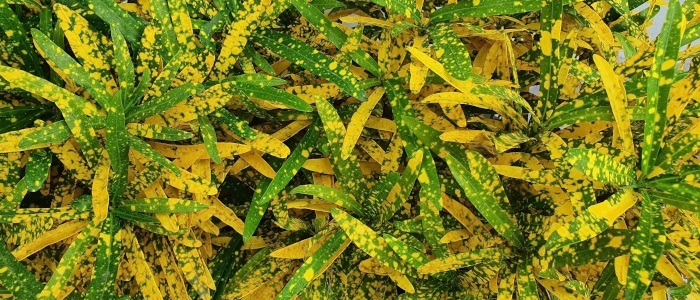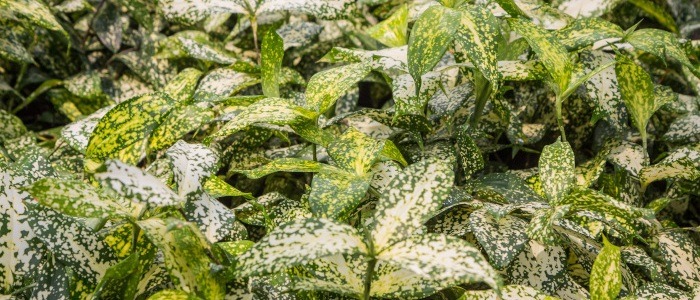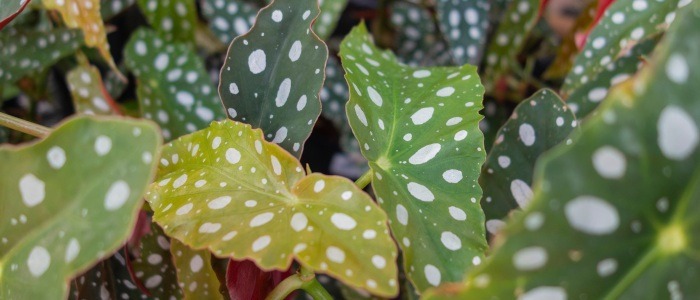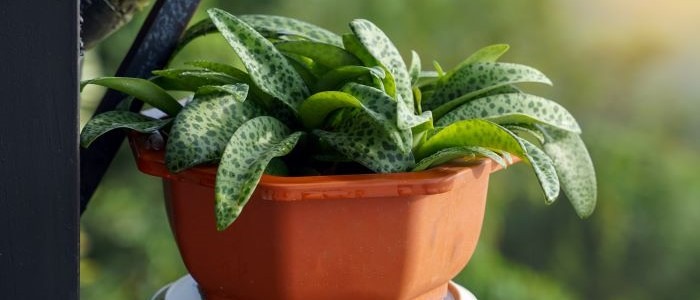Welcome to the wonderful and amazing world of spotted Croton, plant! This vibrant perennial is part of the Codiaeum family and can be found in tropical regions from Asia to Australia. Its distinctive colors combined with its unique leaf patterns make it a favorite among plant lovers.
The spotted Croton is easy to care for and requires minimal maintenance, making it perfect for busy households or those without a green thumb. Plus, its long-lasting flowers are sure to add a pop of color to any room. Ready to learn more about this vibrant species? Keep reading!

Spotted Croton Plant Frequently Asked Questions
How do I take care of a spotted croton plant?
To take care of a spotted croton plant, it's important to keep the soil consistently moist but not waterlogged. Water your plant when the top inch of soil feels dry to the touch. Crotons also benefit from regular fertilization during the growing season, typically from spring to fall. Use a balanced, water-soluble fertilizer every two weeks to promote healthy growth and vibrant foliage.
Can croton plants be grown in containers?
Yes, croton plants can be grown in containers as long as they have good drainage and are planted in a well-draining potting mix. Make sure the container has drainage holes and avoid letting the plant sit in standing water. Crotons also benefit from being slightly root-bound, so choose a pot that is only slightly larger than the root ball. Keep the plant in a bright, warm spot indoors and water as needed,
Caring for the Spotted Croton plant
The Croton plant, also known as Codiaeum variegatum, is a popular houseplant known for its vibrant and colorful foliage. However, this plant can be quite finicky and requires specific care to thrive indoors. In this blog, we will discuss the best practices for caring for your Croton plant and ensuring its longevity. Let’s dive in!
First and foremost, it is important to note that Croton plants prefer bright, indirect sunlight. Direct sunlight can scorch the leaves, while low light can cause the plant to become leggy and lose its vibrant colors. Place your spotted Croton near a sunny window or in a room with bright, filtered light. If your plant is not receiving enough light, you may notice its leaves becoming dull or its growth becoming stunted. Consider supplementing with a grow light if necessary.
In addition to proper lighting, spotted Croton plants require consistent watering. It is important to keep the soil moist but not waterlogged, as overwatering can lead to root rot. Allow the top inch of soil to dry out before watering, and make sure to use well-draining soil.
Croton plants also benefit from regular fertilization during the growing season, typically from spring to fall. Use a balanced fertilizer every two to three weeks to promote healthy growth and vibrant foliage. With these tips in mind, you can ensure that your Croton plant thrives and adds a pop of color to your indoor space.
However, it is also important to keep an eye out for pests, as Croton plants are susceptible to spider mites and mealybugs. If you notice any signs of infestation, such as webbing or white cotton-like clusters, take action immediately to prevent the pests from spreading.
You can use insecticidal soap or neem oil to control the pests or try wiping them off with a damp cloth. By providing your spotted Croton plant with the right care and attention, you can enjoy its beauty for years to come.
Propagating the Spotted Croton Plant
The Spotted Croton plant can be propagated in a few different ways. One method is by taking stem cuttings from a healthy plant and rooting them in water or soil. To do this, select a stem that is at least 4-6 inches long and has several leaves attached. Using a sharp, clean pair of scissors or pruning shears, make a clean cut just below a leaf node.
Remove any leaves from the lower half of the stem, leaving only a few at the top. If you are rooting in water, place the stem cutting in a jar or vase filled with water and make sure that at least one node is submerged.
Change the water every few days to prevent bacteria growth. If you are rooting in soil, dip the cut end of the stem in rooting hormone and then plant it in moist potting soil. Keep the soil moist and place the cutting in a warm, bright location, but out of direct sunlight. With proper care, your spotted Croton plant should root and begin to grow within a few weeks.
How to Prune the Spotted Croton Plant
To begin pruning the spotted Croton plant, start by inspecting the plant for any dead or damaged leaves. These leaves should be removed first, as they can attract pests and diseases to the plant. Use a sharp pair of pruning shears to make clean cuts at the base of the leaf stem. It’s important to avoid tearing the leaves or leaving stubs, as this can create an entry point for pests and diseases. Once the dead and damaged leaves have been removed, you can move on to shaping the plant.
This will involve trimming back any overgrown or straggly branches to promote a more compact and bushy growth habit. Be sure to cut back to a healthy bud or node, and avoid cutting too much off at once, as this can stress the plant. Regular pruning will help to keep your spotted croton plant looking healthy and vibrant, and will also promote better overall growth and flowering.
In addition to shaping the plant, you may also want to consider pruning it to control its size. Spotted croton plants can grow quite tall if left unchecked, so regular pruning can help keep them at a manageable height. To do this, simply cut back the tallest stems to a healthy bud or node, being careful not to remove too much foliage at once.
You can also remove any stems that are growing in unwanted directions, such as towards a wall or other obstacle. With proper pruning, your spotted croton plant will thrive and continue to bring beauty to your home or garden.
Problems that Can Affect the Spotted Croton Plant
Overwatering is the first typical issue that could harm spotted Croton plants. This can lead to root rot and cause the leaves to turn yellow and fall off. Another issue is the lack of humidity, which can cause the leaves to dry out and become crispy.
Pests such as spider mites and mealybugs can also infest the plant, causing damage to the leaves and stunting growth. Fungal infections can also occur, causing brown spots on the leaves and stem. Lastly, exposure to direct sunlight or extreme temperatures can cause the leaves to wilt and turn brown.
The spotted croton plant may face problems such as overwatering, lack of humidity, pest infestations, fungal infections, and exposure to direct sunlight or extreme temperatures. It is important to address these issues promptly to ensure the health and vitality of the plant.
Conclusion
In conclusion, taking care of the spotted croton plant is relatively easy and very rewarding! They are an excellent choice for brightening up any room in your home, and they will add a touch of beauty to any space. With just a few simple steps — like providing the right amount of light, water, and fertilizer — you can keep your spotted croton healthy and happy for years to come. So why not give one a try today? You won’t regret it!
Other Spotted Houseplants





